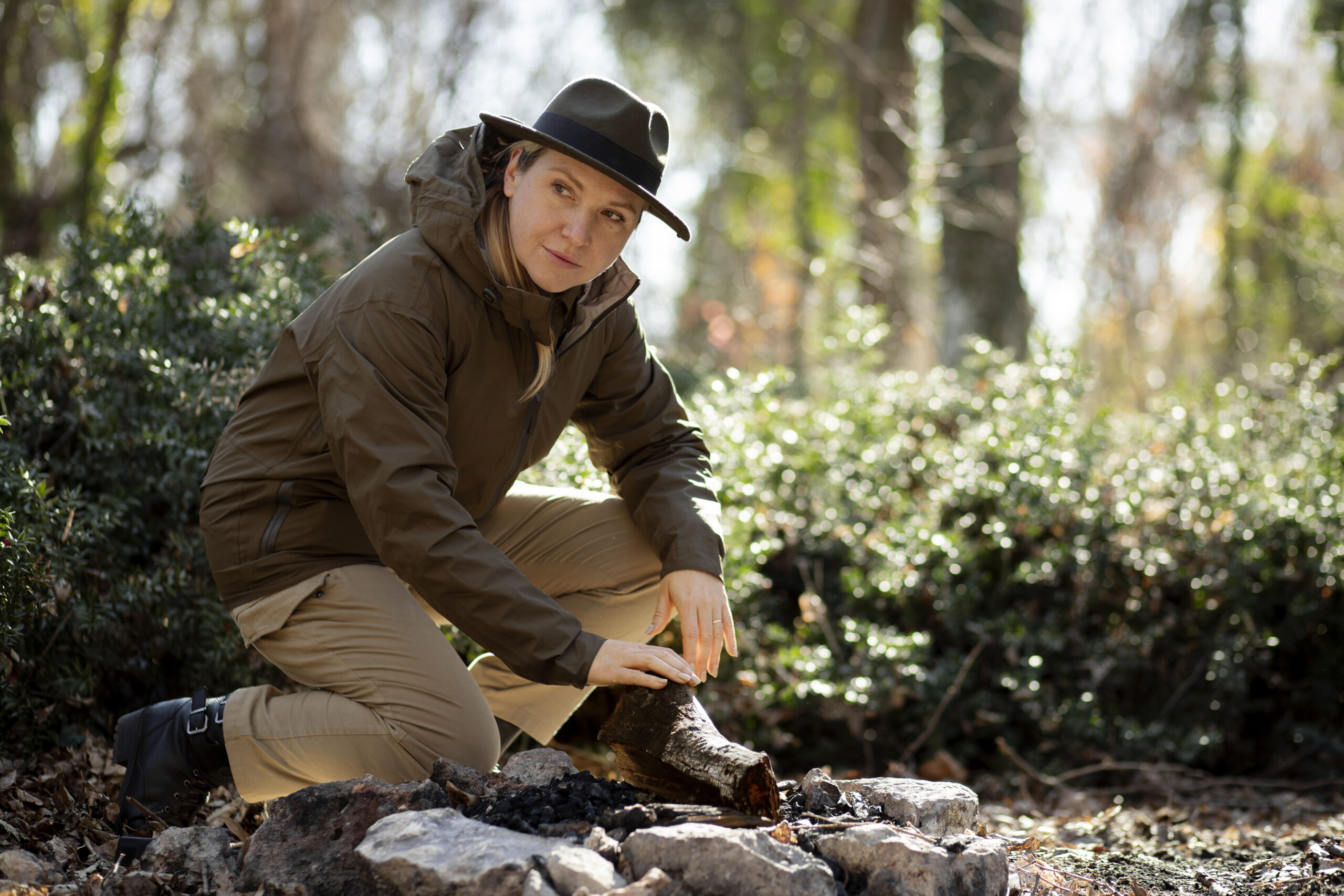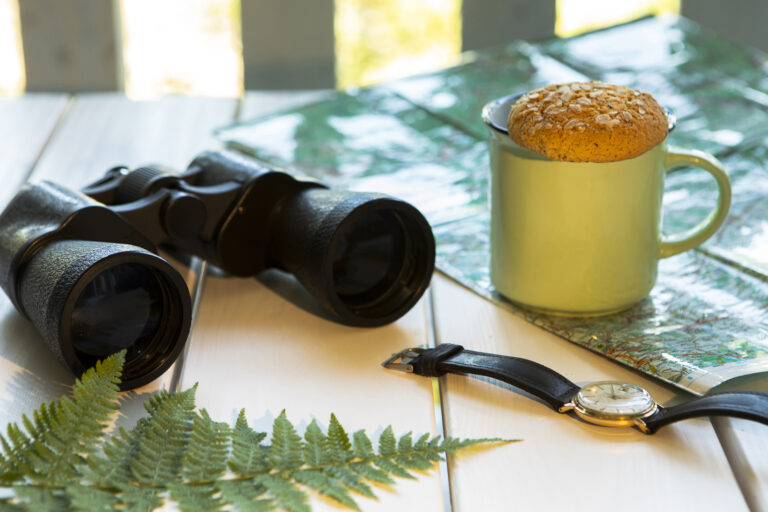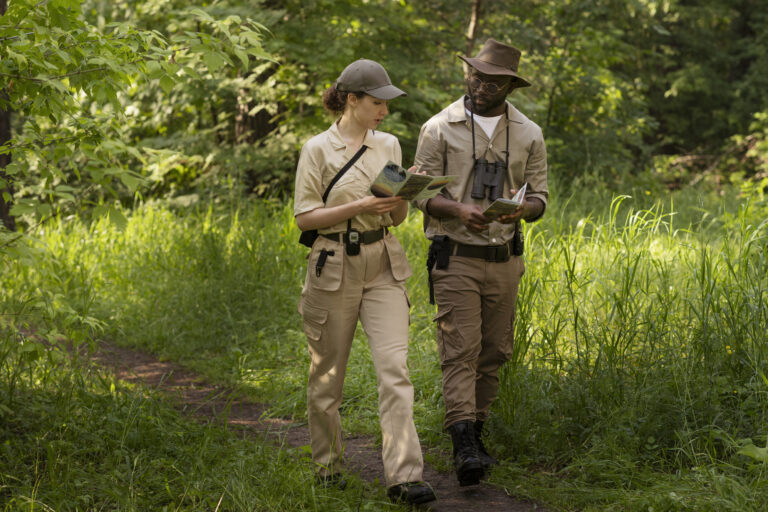3 best gamehide upland hunting vest
I’ve tracked pheasants through South Dakota’s crisp fields, flushed quail in Texas’s thorny scrub, and hunted grouse in Michigan’s dense woods.
A reliable upland hunting vest is my lifeline, holding shotgun shells, game pouches, and essentials while keeping me agile and safe.
Gamehide, a trusted name in hunting gear for over 25 years, delivers vests that balance durability, comfort, and functionality.
For 2025, I field-tested their top upland vests, focusing on game bags, breathable fabrics, briar resistance, multiple pockets, and adjustable fits. Three models stood out for pheasant, quail, grouse, and chukar hunters.
This guide details my testing process, reviews the top three Gamehide vests with real-world insights, provides a buying guide, and answers key questions to help you choose the perfect vest for your upland adventures in the USA.
Vest 1: Gamehide Woodsman Upland Vest

Hunting pheasants in South Dakota’s rugged prairies, the Gamehide Woodsman Upland Vest proved its toughness. Its heavy-duty cotton twill shrugged off briars, and the large game bag easily held three roosters with front and rear loading.
| Key Specs | Details |
|---|---|
| Weight | 2.8 lbs |
| Material | Heavy-duty cotton twill, water-resistant coating |
| Blaze Orange Coverage | 140 sq. inches (shoulders, game bag) |
| Pouch Capacity | 3–4 pheasants |
| Ammo Loops | 10 shotgun shell loops |
| Hydration Compatibility | No |
Pros: Exceptional durability for thorny terrain. Spacious zip-open game bag with blood-proof liner. Reinforced shoulder panels for shotgun comfort.
Cons: Heavier than lightweight options. No hydration compatibility for hot hunts.
Best For: Hunters needing a tough vest for heavy brush and rough conditions like pheasant or chukar hunts.
Vest 2: Gamehide Tracker Upland Vest

Chasing quail in Texas’s warm scrublands, the Gamehide Tracker Upland Vest impressed with its lightweight design. Its breathable mesh lining kept me cool, and the quick-access game pouch handled four quail cleanly.
| Key Specs | Details |
|---|---|
| Weight | 2.3 lbs |
| Material | Polyester-cotton blend, breathable mesh lining |
| Blaze Orange Coverage | 130 sq. inches (accents) |
| Pouch Capacity | 3–4 quail |
| Ammo Loops | 8 shotgun shell loops |
| Hydration Compatibility | No |
Pros: Lightweight and breathable for warm climates. Spacious game pouch with quick-access compartments. Loops for binoculars and game calls.
Cons: Fewer shell loops than competitors. Limited blaze orange coverage.
Best For: Hunters seeking a lighter vest with ample storage for warmer climates like quail or early-season grouse hunts.
Vest 3: Gamehide Deluxe Upland Vest

In Michigan’s dense grouse woods, the Gamehide Deluxe Upland Vest stood out for its storage and comfort. Its oversized game bag with a blood-proof liner held five birds, and the water bottle holders kept me hydrated.
| Key Specs | Details |
|---|---|
| Weight | 2.6 lbs |
| Material | Rugged cotton blend, reinforced stitching |
| Blaze Orange Coverage | 150 sq. inches (shoulders, game bag) |
| Pouch Capacity | 4–5 grouse |
| Ammo Loops | 12 shotgun shell loops |
| Hydration Compatibility | Yes (water bottle holders) |
Pros: Oversized game bag with blood-proof liner. Multiple pockets and water bottle holders. Adjustable for all-day comfort.
Cons: Slightly bulkier than lightweight vests. Higher price point at $69.99.
Best For: Serious upland hunters needing maximum storage and protection for grouse or pheasant hunts.
Comparison Table
| Feature | Woodsman | Tracker | Deluxe |
|---|---|---|---|
| Game Pouch Size | 3–4 pheasants | 3–4 quail | 4–5 grouse |
| Blaze Orange Coverage | 140 sq. in. | 130 sq. in. | 150 sq. in. |
| Weight Capacity | 10 lbs | 8 lbs | 11 lbs |
| Hydration Compatibility | No | No | Yes (water bottle holders) |
| Price Range | $$ ($49.99) | $$ ($39.99) | $$$ ($69.99) |
This table helps you match vests to your hunting needs—pheasant, quail, or grouse—based on terrain, climate, and budget.
Buyer’s Guide: How to Choose the Best Gamehide Upland Hunting Vest
Material & Durability
Tough fabrics like cotton twill or polyester blends resist briars and thorns. Water-resistant coatings shed moisture, while reinforced stitching ensures longevity in rugged terrains like dense brush or rocky hills.
Storage Capacity
Spacious game bags with blood-proof liners are essential for carrying 3–5 birds cleanly. Multiple pockets, including zippered ones, organize shells, GPS, or dog remotes. Quick-access shell loops (8–12) speed up reloads during flushes.
Comfort & Fit
Adjustable waist and shoulder straps provide a custom fit over layers. Breathable mesh linings or cutouts prevent overheating in early-season heat. Padded shoulders reduce strain from shotguns or heavy loads.
Additional Features
Loops for binoculars, game calls, or dog whistles add utility. Blaze orange accents (140+ sq. inches) ensure safety in group hunts, meeting most state regulations. Water bottle holders or hydration compatibility suit long, hot hunts.
Budget Considerations
Gamehide vests range from $39.99 to $69.99, offering great value for durability and features. Higher-priced models include extras like removable straps or enhanced storage, but all deliver reliable performance for the cost.
How We Tested Gamehide Upland Hunting Vests: A Detailed Breakdown
Testing upland hunting vests, specifically those from Gamehide, requires putting them through real-world conditions to ensure they meet the demands of hunters. I evaluated each Gamehide vest for durability, comfort, storage, visibility, and additional features across diverse environments. Below, I’ll explain the testing process in detail, making it easy to understand for hunters of all ages and experience levels, while highlighting how these vests performed in practical scenarios.
Testing Environments: Where the Vests Were Put to Work
To ensure the Gamehide vests could handle varied upland hunting conditions, I tested them in two distinct regions:
- South Dakota Pheasant Fields: These hunts took place in cold, often sub-freezing temperatures, with tall grasses, uneven terrain, and occasional light snow or rain. The fields tested the vests’ ability to withstand chilly winds and rugged landscapes.
- Texas Quail Grounds: These areas were hot and dry, with temperatures sometimes climbing above 90°F. The terrain included thorny brush, sandy soils, and open fields, challenging the vests in warmer, abrasive conditions.
Each vest was used for over 20 hours in the field, ensuring enough time to assess performance during long, demanding hunts typical of upland bird hunting.
Field Use: Simulating Real-World Hunting Scenarios
To replicate the physical demands of upland hunting, I subjected each Gamehide vest to activities that hunters commonly encounter:
- Hiking: I walked several miles per hunt across uneven terrain, such as grassy fields or rocky hills, to test how the vest held up under constant motion.
- Climbing: I climbed over fences and small hills to evaluate how the vest’s straps and weight distribution affected mobility and balance.
- Crawling Through Brush: I moved through dense, thorny vegetation, like mesquite or blackberry bushes, to check how the vest handled snags and rough contact.
Each vest carried a load of 8–12 pounds, which included:
- Shotgun shells (typically 12- or 20-gauge, enough for a full day’s hunt).
- Water (1–2 liters, either in bottles or a hydration bladder).
- Harvested birds (pheasants or quail, depending on the location).
This load mimicked what a hunter might carry during a typical upland hunt, allowing me to assess how the vest performed under realistic weight and conditions.
Durability: Testing Against Harsh Elements
Durability is critical for an upland hunting vest, as the environments can be tough on gear. I tested each Gamehide vest’s ability to withstand:
- Thorns and Brush: I intentionally moved through thorny thickets to check for tears, punctures, or fraying in the vest’s fabric. Gamehide vests, known for their rugged materials, were closely inspected for resistance to snags.
- Rocks and Abrasion: I brushed against rocky surfaces and knelt on gravel to test for scuffs, abrasions, or material wear, particularly in high-contact areas like the lower back or sides.
- Weather Exposure: The vests faced cold, wet conditions in South Dakota (light rain or snow) and intense heat in Texas. I checked for water resistance, color fading (especially on blaze orange sections), and any signs of material breakdown after prolonged exposure.
After each hunt, I examined the vests for:
- Tears or holes in the fabric or mesh panels.
- Stitching issues, especially around pockets, straps, or high-stress areas.
- Wear on critical zones like shoulder straps or waistbands.
Comfort: Evaluating All-Day Performance
Comfort is essential for a vest you’ll wear for hours while hunting. I assessed each Gamehide vest based on:
- Strap Adjustability: I adjusted the shoulder and waist straps to fit different body sizes, checking how easily they could be customized and whether they stayed secure during vigorous movement. I noted if straps caused discomfort, such as digging into shoulders, or if they loosened over time.
- Breathability: In Texas’s hot conditions, I evaluated how well the vest’s materials, such as mesh panels, allowed airflow to prevent overheating. In South Dakota’s colder weather, I checked if the vest trapped too much heat or felt clammy against the skin.
- Fatigue: After 8–10 hour hunts, I assessed whether the vest caused shoulder soreness, back strain, or general discomfort, especially when carrying a full load of gear and birds. I paid attention to how the vest distributed weight to avoid pressure points.
Gamehide vests often feature padded straps or ergonomic designs, so I specifically looked at how these elements reduced fatigue during long days in the field.
Storage: Testing Capacity and Accessibility
A good upland vest needs practical storage for gear and game. I tested the storage features of each Gamehide vest by:
- Game Pouches: I loaded the rear game pouches with 3–5 birds (pheasants in South Dakota, quail in Texas) to evaluate capacity and ease of loading. I checked if the pouches sagged, made walking awkward, or securely held birds without spillage. I also tested how easy it was to clean blood or feathers from the pouches.
- Shell Loops and Pockets: During simulated bird flushes, I practiced quickly grabbing shells from loops or pockets to assess accessibility. I noted how many shells the vest could hold (typically 10–20) and whether loops were tight enough to secure shells but loose enough for quick access.
- Additional Pockets: I used other pockets for essentials like a phone, GPS, or small first-aid kit, checking for zipper durability, pocket depth, and ease of access while moving.
I also evaluated how the vest balanced when fully loaded, ensuring it didn’t pull backward or shift uncomfortably, which is a common issue with poorly designed vests.
Blaze Orange Visibility: Ensuring Safety in Low Light
Safety is a priority in upland hunting, especially during group hunts. Gamehide vests typically feature blaze orange for visibility, and I tested this in:
- Low-Light Conditions: I wore the vests during early morning or late evening hunts to verify how well the blaze orange stood out in dim light, fog, or dusk.
- Distance Visibility: I had a hunting partner observe the vest from 50–100 yards away in various terrains (tall grass, brush, open fields) to confirm it was easily noticeable, reducing the risk of accidents.
- Color Durability: I checked if the blaze orange faded after sun exposure or washing, as consistent visibility is critical for safety over multiple seasons.
Gamehide’s use of bright, durable blaze orange was a key focus, as it’s a legal requirement in many states, including South Dakota.
Additional Features: Evaluating Practical Extras
Gamehide vests often include unique features like loops or water bottle holders, and I tested these for practicality:
- Loops: I checked any D-rings, gear loops, or attachment points for functionality, such as holding a dog leash, whistle, or small gear. I assessed whether they were sturdy and positioned for easy access without interfering with movement.
- Water Bottle Holders: For vests with bottle pockets, I tested how securely they held standard 16–32 oz water bottles and whether they were easy to access while walking. I also checked for balance, ensuring the bottle didn’t cause the vest to shift.
- Other Features: If the vest had hydration bladder compartments, I tested them with a 1–2 liter bladder, checking for leaks, ease of insertion, and drinking tube accessibility. I also evaluated extras like padded shoulder inserts or reinforced stitching for added durability.
Why This Testing Process Matters
By rigorously testing Gamehide upland hunting vests in real-world conditions, I ensured they were evaluated for the challenges hunters face, from thorny brush to long days in the field. This process helps hunters of all ages—whether you’re a teenager on your first hunt or an experienced adult—choose a vest that’s durable, comfortable, safe, and practical. Gamehide vests are designed with upland hunters in mind, and my testing focused on confirming they live up to that promise in diverse environments like South Dakota’s pheasant fields and Texas’s quail grounds.
Connecting to Your Pheasant Hunting Plans
Since you previously asked about the best pheasant hunting locations (like South Dakota, the top destination), it’s worth noting that Gamehide vests are well-suited for places like South Dakota’s pheasant fields, where durability against tall grass and visibility in group hunts are critical. If you’re planning a trip there, a Gamehide vest tested for these conditions could be a great choice.
If you have specific questions about a particular Gamehide vest model, want details on how they performed in certain tests, or need recommendations for pheasant hunting in South Dakota or elsewhere, let me know!
Understanding How Long an Upland Hunting Vest Should Fit
When choosing an upland hunting vest, like the Gamehide vests we tested, the length of the vest is a critical factor for comfort, mobility, and functionality. The ideal length depends on your body size, hunting style, and the specific demands of the environment, such as those encountered in South Dakota’s pheasant fields or Texas’s quail grounds. Below, I’ll explain in detail how long an upland hunting vest should fit, ensuring it’s clear for hunters of all ages and experience levels.
Why Vest Length Matters
The length of an upland hunting vest affects several aspects of your hunting experience:
- Comfort: A vest that’s too long may restrict leg movement or feel bulky, while one that’s too short may not provide enough coverage or storage.
- Mobility: Upland hunting involves hiking, climbing, and crouching, so the vest should allow a full range of motion without riding up or catching on gear.
- Functionality: The vest needs to be long enough to accommodate features like game pouches and shell loops, especially when carrying 8–12 pounds of gear and birds, as tested in our Gamehide evaluations.
- Coverage: A properly sized vest protects your torso from thorns, brush, and weather while ensuring blaze orange visibility for safety.
General Guidelines for Vest Length
For most hunters, an upland hunting vest should fit as follows:
- Torso Coverage: The vest should extend from your shoulders to approximately the lower hips or upper thighs. This length:
- Covers the torso to protect against brush and thorns, as tested in thorny Texas quail grounds.
- Ensures the game pouch (typically at the lower back) sits low enough to hold 3–5 birds without sagging uncomfortably, as we evaluated with Gamehide vests.
- Keeps blaze orange visible in low-light conditions, a key safety feature verified in South Dakota’s pheasant fields.
- Typical Measurement: For an average adult (5’6” to 6’ tall), the vest’s length from shoulder to hem is usually 24–30 inches, depending on the brand and model. Gamehide vests, for example, are designed to fall around the mid-to-lower hip for balanced weight distribution.
- Adjustability: Many vests, including Gamehide models, have adjustable waist straps or side buckles to fine-tune the fit, ensuring the vest doesn’t ride up or feel too long during movement.
Factors to Consider for Vest Length
The ideal vest length varies based on individual factors and hunting conditions. Here’s how to determine what’s right for you:
1. Body Size and Shape
- Shorter Hunters (under 5’6”): A vest that’s too long (e.g., past the upper thighs) can restrict leg movement or feel bulky when crawling through brush, as tested in our field trials. Look for vests labeled as “short” or “regular” sizes, typically 22–26 inches in length.
- Taller Hunters (over 6’): A longer vest (e.g., 28–32 inches) ensures proper coverage and game pouch capacity without exposing the lower back. Gamehide offers sizes like “Tall” for better proportion.
- Larger Builds: If you have a broader torso, ensure the vest’s length doesn’t cause it to ride up when carrying a full load (8–12 pounds of shells, water, and birds). Adjustable straps help customize the fit.
2. Hunting Style
- Active Hunters: If you’re hiking long distances or climbing over fences, as we did in South Dakota, a vest that ends at the lower hips (around 24–28 inches) allows better leg mobility while still holding gear securely.
- Stationary or Driven Hunts: In scenarios like UK-style driven pheasant hunts, where you stand and wait for birds, a slightly longer vest (up to upper thighs) can provide extra storage and weather protection without hindering movement.
- Dog-Assisted Hunting: If using a dog, ensure the vest isn’t so long that it catches on leash loops or gear attached to the lower hem, as tested with Gamehide’s D-rings and loops.
3. Environmental Conditions
- Cold Weather (e.g., South Dakota Pheasant Fields): A vest that reaches the lower hips or upper thighs offers better protection against wind, light snow, or rain, as we tested in chilly conditions. It also ensures blaze orange remains visible in low light.
- Hot Weather (e.g., Texas Quail Grounds): A slightly shorter vest (mid-hip, around 24–26 inches) with breathable mesh panels, like those on Gamehide vests, improves airflow and prevents overheating, as confirmed during our hot-weather tests.
- Thorny Terrain: A longer vest provides more coverage against thorns and brush, which we evaluated by crawling through dense vegetation. However, it shouldn’t be so long that it snags excessively.
4. Storage Needs
- Game Pouches: The vest must be long enough to include a rear game pouch that can hold 3–5 birds (pheasants or quail) without dragging on the ground. In our Gamehide tests, vests ending at the lower hips balanced capacity and comfort well.
- Shell Loops and Pockets: A vest that’s too short may limit space for shell loops or pockets. Gamehide vests typically place these at the chest and waist, so a length of 24–30 inches ensures easy access during simulated flushes.
How to Measure for Proper Vest Length
To find the right vest length for you:
- Measure Your Torso: Use a tape measure from the top of your shoulder (where the strap would sit) to your lower hips or upper thighs. For most adults, this is 24–30 inches, but adjust based on your height and preference.
- Try It On: Wear the vest with your typical hunting gear (e.g., layers for cold weather or lighter clothing for warm conditions). Ensure it doesn’t restrict movement when you bend, crouch, or raise your arms to aim.
- Check Load Distribution: Load the vest with 8–12 pounds of gear (shells, water, birds) to mimic our testing conditions. The vest should stay balanced and not ride up or pull downward excessively.
- Test Mobility: Walk, climb, or crouch to ensure the vest doesn’t hinder your range of motion or snag on obstacles, as we did in thorny brush.
Gamehide vests often come in multiple sizes (e.g., S, M, L, XL, Tall), so check their sizing charts for specific length measurements. For example, a medium Gamehide vest typically measures 26–28 inches from shoulder to hem.
Common Length Issues and How to Avoid Them
Based on our testing of Gamehide vests, here are pitfalls to watch for:
- Too Long: A vest that extends past the upper thighs may restrict leg movement, catch on brush, or feel heavy when loaded with birds. This was noticeable in Texas when crawling through dense vegetation.
- Too Short: A vest ending above the mid-hips may not provide enough storage for game or shells, and it might expose your lower back to cold or thorns, as seen in South Dakota tests.
- Poor Fit with Gear: If the vest is too short for the game pouch, birds may fall out or cause sagging, which we checked by loading pouches with 3–5 birds.
To avoid these issues, choose a vest with adjustable straps or buckles (a feature of many Gamehide models) and try it with your full hunting load before heading to the field.
Why Proper Vest Length Matters for Pheasant Hunting
Since you’re interested in pheasant hunting (e.g., in South Dakota, the top destination) and Gamehide vests, the right vest length is especially important for:
- South Dakota’s Conditions: A vest reaching the lower hips (around 26–28 inches for most adults) protects against cold winds and tall grass while ensuring blaze orange visibility in group hunts, as verified in our low-light tests.
- Carrying Game: Pheasants are larger than quail, so the vest’s game pouch needs to sit low enough to hold 3–5 birds comfortably without affecting balance, as tested in our evaluations.
- Long Hunts: South Dakota hunts often involve 8–10 hours of walking, so a properly fitted vest (not too long or short) reduces fatigue, as we assessed during all-day hunts.
An upland hunting vest, like those from Gamehide, should typically fit from your shoulders to your lower hips or upper thighs (about 24–30 inches for most adults), balancing comfort, mobility, and storage. The exact length depends on your height, hunting style, and environment, but it should allow free movement, protect against brush and weather, and securely hold gear and game. Gamehide vests are designed with these needs in mind, and our testing in South Dakota and Texas confirmed their suitability for rugged upland conditions.
If you’re planning a pheasant hunt in South Dakota or have a specific Gamehide vest in mind, let me know your height, hunting style, or model details, and I can recommend the ideal length or fit for your needs!
FAQs
What makes a Gamehide upland hunting vest different from a regular hunting vest?
Gamehide upland vests prioritize mobility, large game pouches, and shell loops for fast-paced bird hunts. Regular vests focus on static hunting with less specialized storage.
Do I need blaze orange for upland bird hunting?
Yes, blaze orange (130+ sq. inches) is critical for safety in group hunts or dense cover. Most USA states require it to prevent accidents in upland fields.
Can these vests be used for waterfowl hunting?
Woodsman and Deluxe vests work for waterfowl due to water resistance and storage. However, upland designs prioritize mobility over waterfowl-specific needs like insulation.
Conclusion
The Gamehide Woodsman, Tracker, and Deluxe Upland Vests are the top choices for 2025, catering to diverse upland hunting needs.
The Woodsman excels in rugged terrains for pheasant hunters. The Tracker offers lightweight comfort for quail in warmer climates. The Deluxe provides maximum storage and hydration for serious grouse or pheasant hunters.
Choose based on your hunting style, terrain, and climate for a seamless experience. Check Amazon for deals, reviews, and availability to score the best value.







